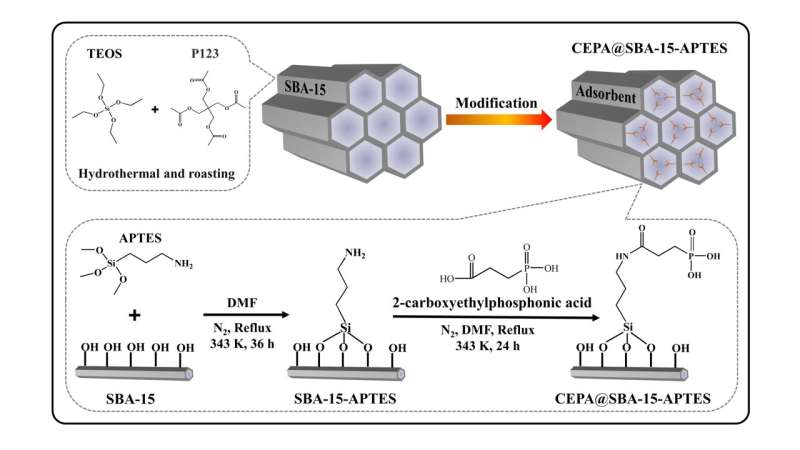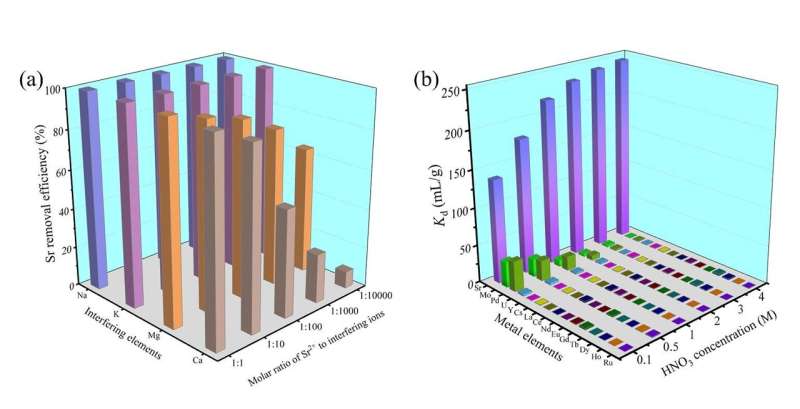This article has been reviewed according to Science X's editorial process and policies. Editors have highlighted the following attributes while ensuring the content's credibility:
fact-checked
peer-reviewed publication
trusted source
proofread
Novel silica-based adsorbent helps selective separation of strontium

Prof. Huang Qunying's team from the Hefei Institutes of Physical Science of the Chinese Academy of Sciences, in collaboration with Prof. Ning Shunyan's team from South China University, developed a novel silica-based adsorbent for the highly selective separation of strontium (Sr) from an acidic medium.
The results
were published in the Journal of Hazardous Materials. Radioactive strontium, known as 90Sr, is of concern because it's highly toxic both radiologically and biochemically. When high-level liquid waste (HLLW) is processed through vitrification, the heat released from the decay of 90Sr can cause problems. This heat can destabilize the material in which it's contained, potentially leading to the release of other radioactive substances. However, 90Sr can also be reused as a special radioactive or
To address the above issues, the research team developed a novel porous adsorbent called CEPA@SBA-15-APTES. This adsorbent is made by modifying mesoporous silica to selectively separate Sr. They studied how this adsorbent behaves when exposed to different environments using Sr-stable nuclides.
They found that the adsorption reached equilibrium in 30 minutes in a solution with a low concentration of nitric acid (HNO3) and in only five minutes in a solution with a higher concentration of HNO3.

Importantly, the adsorbent showed excellent selectivity for Sr in 3 M HNO3 simulated HLLW solution. The mechanism of Sr adsorption differs depending on the acidity of the solution: Ion exchange occurs in solutions with low HNO3 concentration, while coordination occurs in solutions with higher HNO3 concentration.
This study develops a novel material for the efficient separation of strontium, which is a reference for the selective separation and recovery of radionuclides.
More information: Shichang Zhang et al, Phosphination of amino-modified mesoporous silica for the selective separation of strontium, Journal of Hazardous Materials (2024). DOI: 10.1016/j.jhazmat.2024.133741
Journal information: Journal of Hazardous Materials
Provided by Chinese Academy of Sciences




















